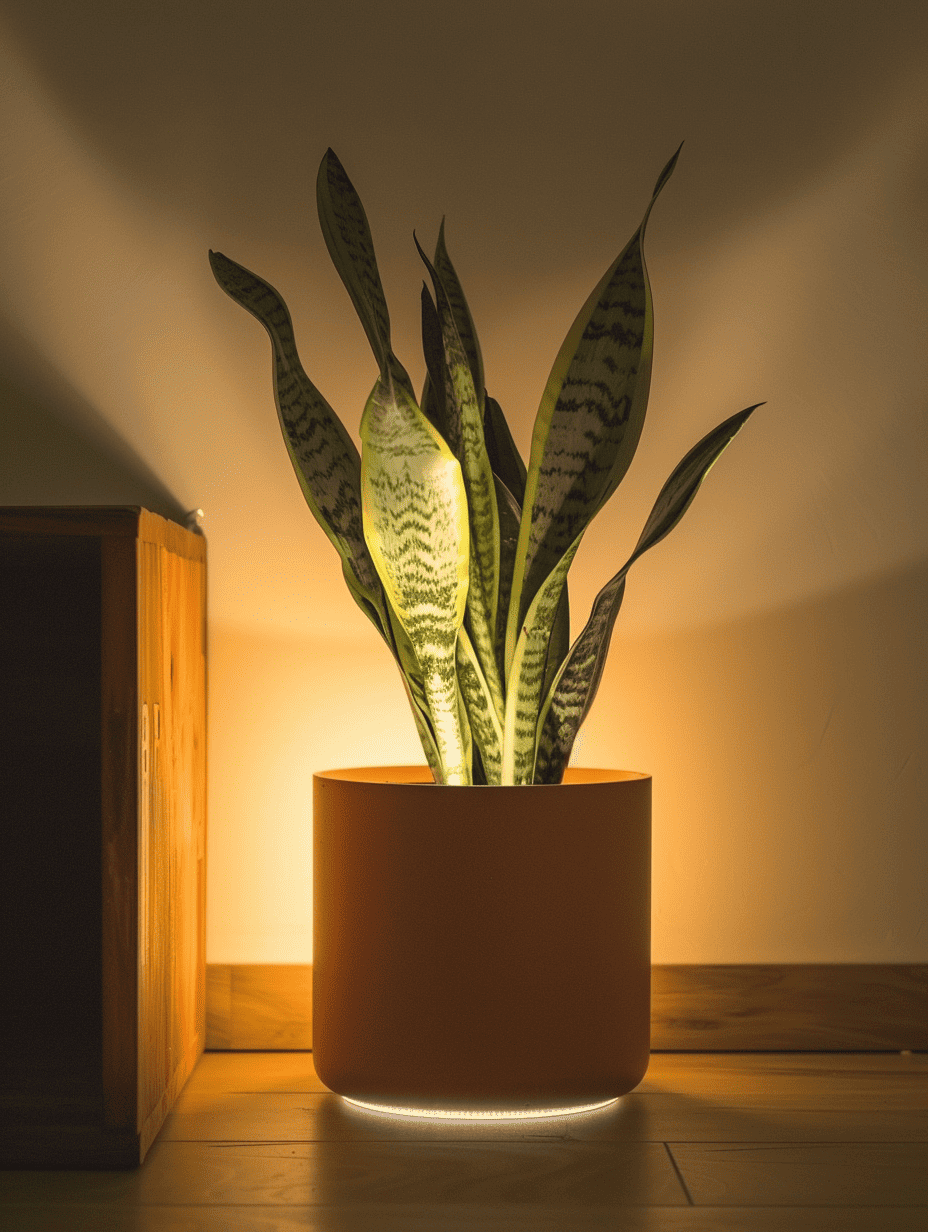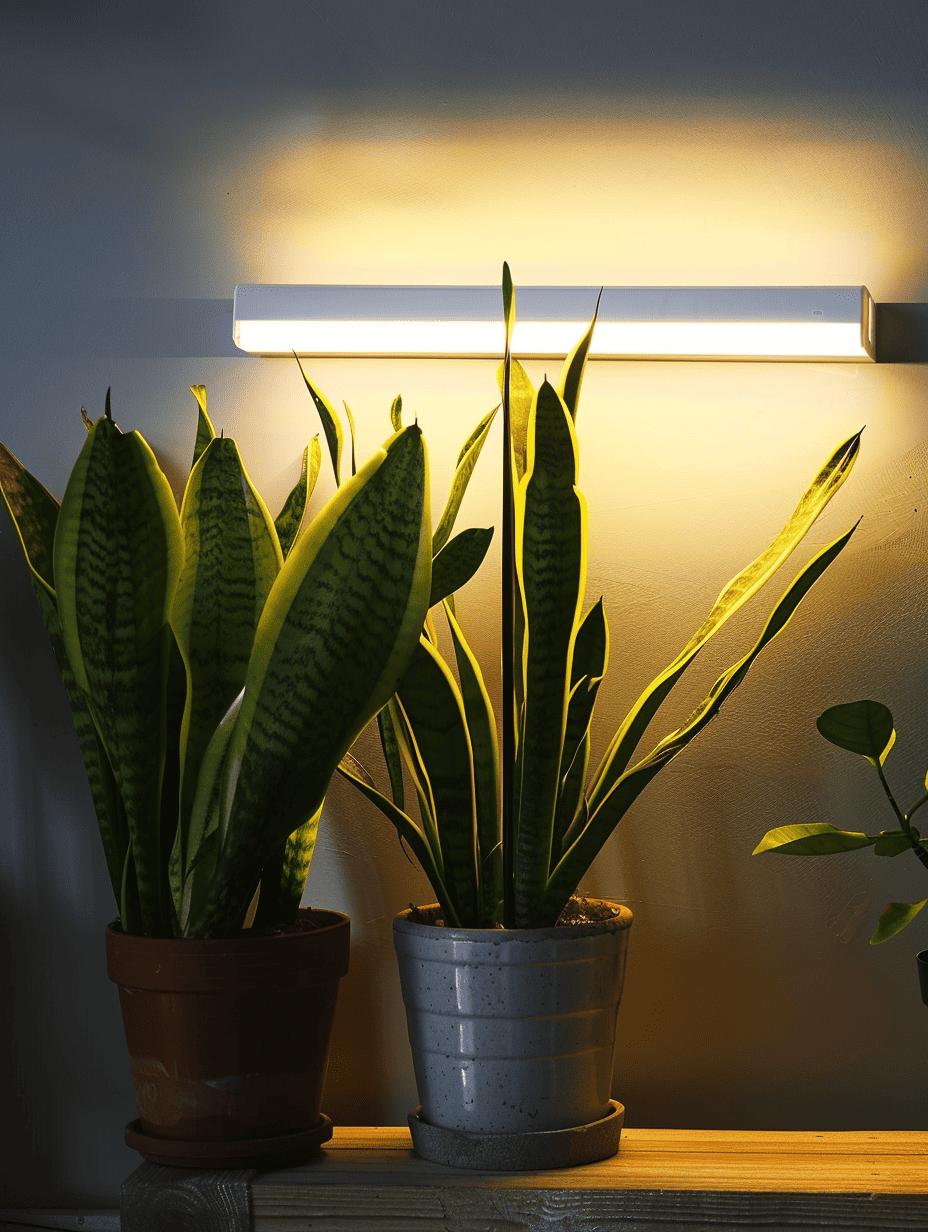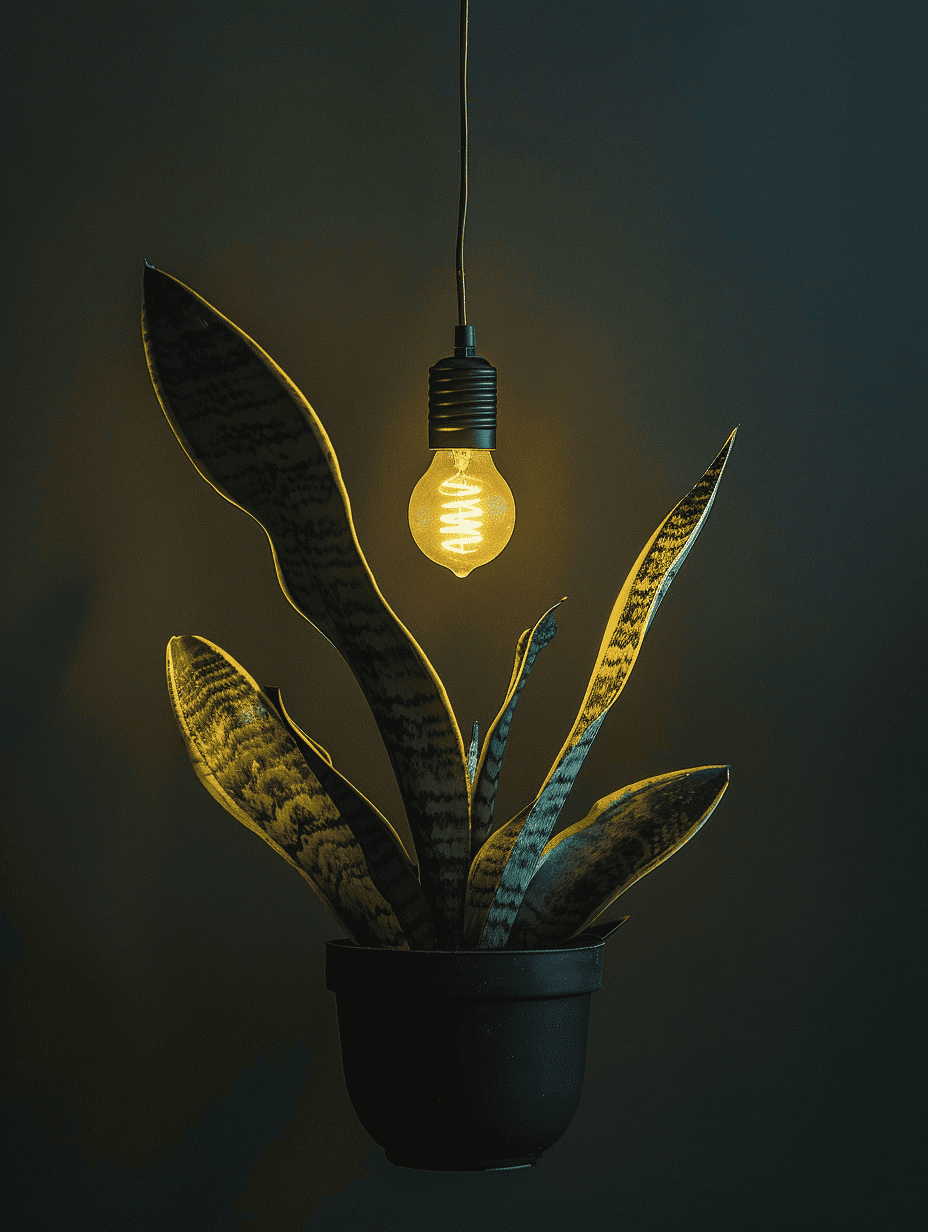If you're wondering whether snake plants need to grow lights, the short answer is not necessarily, but they can benefit from them in certain situations!
Snake plants, known for their hardiness and low-light tolerance, can thrive in various lighting conditions, from low to bright indirect light.
If you usually place your snake plant in a spot that doesn't get a lot of natural light, grow lights can be a valuable tool to ensure it receives the light it needs to photosynthesize and stay healthy.
Remember, the goal isn't to replicate the intensity of direct sunlight, which can harm the plant, but to provide a consistent light source that simulates the sun's effects.
Grow Lights Basics
When considering grow lights for your snake plant, you've got a variety of types to choose from and a straightforward mechanism by which they work. Let's break it down to get your green friends thriving.
Types of Grow Lights
LED (Light Emitting Diodes)

LEDs are energy-efficient and have a long lifespan, making them ideal for promoting specific plant growth spectrums due to their ability to emit targeted wavelengths of light.
Fluorescent Lights

This light is best for indoor plants, emitting warm and cool white light for various growth stages. It is also cheaper than other types of grow lights.
HID (High-Intensity Discharge) Lights

High-pressure sodium (HPS) and metal halide (MH) lights are two types of High-Intensity Discharge (HID) lighting commonly used for plant growth.
For snake plants, HPS lights provide warm, red spectrum light that can support flowering and fruiting stages. In contrast, MH lights offer cool, blue spectrum light, promoting leafy growth.
Both types are consequential and can be effective for indoor gardening, but their usage should be tailored to the snake plant's specific growth phase and needs.
How Grow Lights Work
Grow lights mimic the sun's spectrum, giving your snake plant the necessary photosynthesis wavelengths. Here's a straightforward way to understand the process:
- Light Absorption - Your plant's leaves absorb light to convert carbon dioxide and water into oxygen and glucose through photosynthesis.
- Energy Conversion - This light energy powers the chemical reactions that facilitate growth and health.
Placement Tips
For optimal placement of plants under grow lights, fluorescent lights should be positioned 6 to 12 inches from plants, allowing closer proximity due to lower heat output.
LED lights can be placed 12 to 24 inches away, as they emit less heat and have a high output. Balancing the light source's intensity, wavelength, and distance is crucial to ensure the plants receive adequate light without damage.
Final Tips
Growing lights can boost your snake plant, especially if you lack natural sunlight. Remember, the key is to replicate natural conditions as much as possible.
Watering While Using Grow Lights
Given the unique conditions grow lights create, a meticulous watering strategy is essential to prevent issues like root rot.
This approach becomes essential as the grow lights alter the environment around your snake plant. Below are crucial tips to ensure adequate watering and soil moisture management:
- Check soil moisture regularly to avoid overwatering.
- Water sparingly, allowing the topsoil to dry out between waterings.
- Ensure proper drainage to prevent water from accumulating at the roots.
Fertilization Needs
While snake plants benefit from periodic fertilization, moderation is essential.
Under grow lights, applying a diluted houseplant fertilizer is recommended every few months, particularly during the active growing seasons of spring and summer.
This ensures your snake plant receives adequate nutrients without the risk of over-fertilization.
Are you curious about snake plants' light needs? Learn all about it in our article: Sunburned Or Just Right? Understanding Your Snake Plant's Light Needs.
Check out the top fertilizers to keep your snake plants healthy and vibrant here: 14 Best Fertilizers For Snake Plants. Don't miss out—read now for expert tips and tricks!

